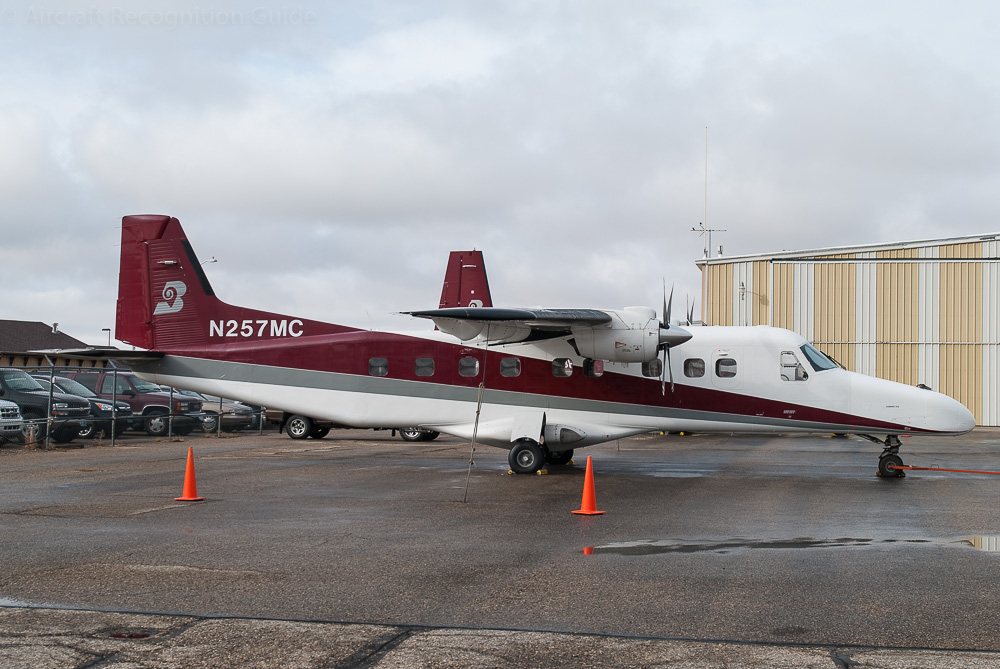deHavilland DH104 Dove
The cockpit popping out of the front fuselage is one of the main characteristics of the twin prop aircraft. Other features are the rectangular cabin windows with rounded corners, and main gear retracting outward in the wings. Normally the vertical stabiliser is curved from the dorsal fin to the tail cone, but there are conversions with a different tail.










